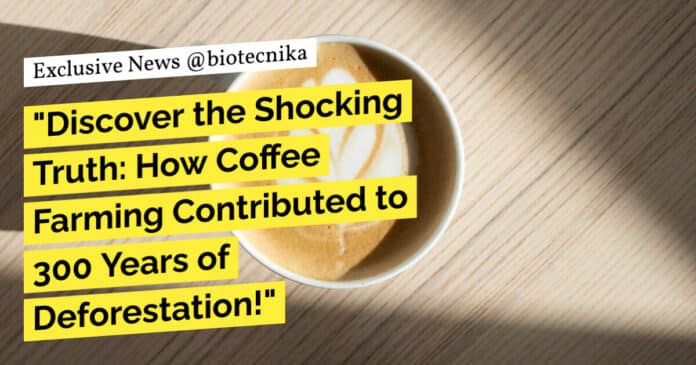Coffee’s Legacy: Almost 300 Years of Deforestation
Coffee farming has a long history intertwined with deforestation. For nearly 300 years, the cultivation of coffee has contributed to the destruction of tropical forests. This has had detrimental effects on the environment and biodiversity. In this article, we will explore the impact of coffee farming on deforestation, the importance of shade-grown coffee, and the need for consumers to make informed choices when purchasing coffee.
The Impact of Coffee Farming on Deforestation:
Coffee farming is a major driver of deforestation in many coffee-producing regions. The cultivation of coffee typically involves clearing land by cutting down trees and other vegetation. This process not only destroys the natural habitat of many species but also leads to soil erosion and reduced water quality.
Deforestation also contributes to climate change. Trees play a crucial role in mitigating climate change by absorbing carbon dioxide and releasing oxygen. When forests are cleared for coffee farming, this natural carbon sink is lost, resulting in increased greenhouse gas emissions.
The Importance of Shade-Grown Coffee:
Shade-grown coffee refers to coffee plants that are grown under a canopy of trees. This traditional method of cultivation provides numerous environmental benefits compared to sun-grown coffee
.1. Environmental Sustainability: Shade-grown coffee requires fewer synthetic fertilizers and pesticides due to the natural pest control provided by the diverse ecosystem created by the tree canopy. This reduces the potential for harmful chemicals to enter the soil and water systems.
2. Water Conservation: The shade provided by the tree canopy helps to conserve water by reducing evaporation. This is especially important in regions where water resources are limited.
3. Soil Health: The tree canopy acts as a protective layer, preventing soil erosion caused by heavy rainfall. It also enriches the soil with organic matter as leaves and other plant material decompose.
4. Biodiversity Preservation: Shade-grown coffee farms provide habitat for a variety of plant and animal species. These farms have higher levels of biodiversity compared to sun-grown coffee farms, which are often monocultures. Preserving biodiversity is vital for maintaining the health of ecosystems and supporting pollinators.
Consumer Awareness and Sustainable Choices:
Despite the environmental benefits of shade-grown coffee, consumers often lack information about the farming methods used to produce their coffee. Currently, there is no standardized labeling system to indicate whether coffee has been sustainably produced or has contributed to deforestation.
To make informed choices, consumers can look for certifications such as “Rainforest Alliance” or “Fairtrade” which prioritize environmental and social sustainability. Buying from local and organic coffee producers can also support sustainable practices.
The legacy of coffee farming is deeply intertwined with deforestation. However, there is potential for change. By supporting shade-grown coffee and demanding transparency in the coffee industry, consumers can contribute to a more sustainable future. It is essential for all stakeholders, from farmers to consumers, to recognize the impact of coffee production on deforestation and work towards more environmentally friendly practices.
Keywords: coffee farming, deforestation, shade-grown coffee, environmental sustainability, water conservation, soil health, biodiversity preservation, consumer awareness, sustainable choices.



























